In Nagaland, more than 47% of the population is engaged in agriculture and entirely dependent on the traditional mode of farming and has used organic manure like cattle dung, dried leaves-litter, and crop residues to enhance the capacity of soil from time immemorial. Also, studies have shown that Nagaland has negligible use of inorganic supplements in their fields. Thus, Nagaland has a high potential to be converted into an organic state without making any significant shifts in its existing farming practices.
Shifting cultivation, locally known as Jhum-kheti, is one of the oldest forms of the agricultural process in practice in Nagaland. However, some studies regard Jhum cultivation as harmful to the environment. Still, there is a scope to reinvent this farming method and move towards a more sustainable form of agriculture there. The organic activities have taken up by the department of agriculture, Nagaland, during the year 2020-2021:
- 30 Nos. of field demonstration on organic inputs such as bio-fertilizers, green manures, etc
- Distribution of organic inputs to the farmers
- Training of farmers in organic cluster project area-Mokokchung, Wokha, Peren, and Zunheboto districts in collaboration with the international competence center for organic farming (ICCOA), Bangalore.
1000 ha Organic certification for growers group is under conversion. The state Department of Horticulture has introduced the concept of organic farming with certification for horticultural crops in the state, during which 2000 ha area was taken up covering all the districts for crops like large cardamom, ginger, turmeric, vegetables, pineapples, etc. which have a high market value.
The organic program is for three years, with registration and ICS system done by accredited companies/NGOs recognized by the government of India. Organic farming with certification for an area of 2000 ha is in its final stage, and the Beneficiaries under this program will likely get their organic certification.
Nagaland organic farming
How does the government support organic farming in Nagaland
Rashtriya Krishi Vikas Yojana (RKVY)
As part of RKVY, eight departments and three missions of the agribusiness and related sectors are involved. During the 12-year plan period, the program aims to achieve and sustain desired annual growth by ensuring holistic development of agriculture and related sectors. The following are the aims of the scheme:
- Encourage the states to invest more in agriculture and allied sectors by providing incentives.
- To allow states to plan and execute agriculture and allied sector schemes with flexibility and autonomy.
- Agro-climatic conditions, technologies, and natural resources should be considered when preparing agriculture plans for districts and states.
- Ensure that the agricultural plans of the states better reflect local needs, crops, and priorities.
- The goal is to reduce yield gaps in important crops through focused interventions.
- In agriculture and related industries, to maximize returns for farmers.
- The objective is to bring about quantifiable changes in the production and productivity of various components of agriculture and allied sectors.
Mission Organic Value Chain Development For North East Region (MOVCD-NER)
As part of the National Mission for Sustainable Agriculture (NMSA), the Mission for Organic Value Chain Development for North-East Region (MOVCD-NER) is a Central Sector Scheme. It will be implemented during the 12th plan period in Arunachal Pradesh, Assam, Manipur, Meghalaya, Mizoram, Nagaland, Sikkim, and Tripura. Nagaland’s Department of Agriculture was the Nodal Agency for the scheme during 2015-16. The scheme aims to accomplish the following goals:
- To develop a commodity-specific crop organic value chain to address gaps in organic crop production, wild crop harvesting, livestock management, processing, handling, and marketing of organic agricultural products with necessary infrastructure, technical, and financial assistance.
- With end-to-end production, processing, storage, and marketing facilities, farmers can replace conventional farming/subsistence farming with high-value commercial organic enterprises in specific crops.
- Aims to facilitate partnerships between organic farmers and businesses [Local enterprises or Farmer Producer Companies (FPCs)] in the domestic and export markets.
- To link growers with consumers, certified organic production should be developed in a value chain mode. And thereby supporting the development of a complete value chain that includes inputs, seeds, certifications, and facilities for collecting, aggregating, processing, marketing, and building brands.
Major crops in Nagaland
Nagaland is basically a land of agriculture. About 70 percent of the population depends on agriculture. Therefore, the agricultural sector’s contribution in the state is very significant. Rice is the staple food. It occupies about 70 percent of the total area under cultivation and constitutes about 75 percent of the total food production in the state. Rice, millet, maize, and pulses are the main crops. Additionally, cash crops like sugarcane and potatoes are becoming more popular.
In case you missed it: Humic Acid Fertilizer Uses: Role, Application Methods, Dosage, and Benefits for Sustainable Agriculture
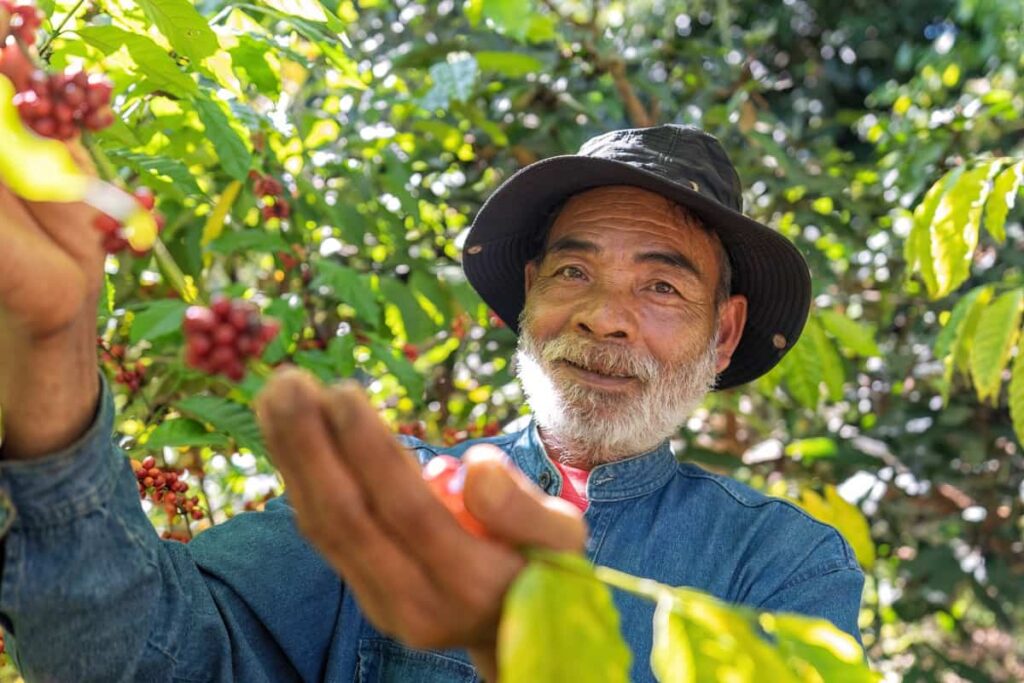
Additionally, Nagaland grows coffee, cardamom, and tea on plantations. The people’s staple diet is rice, the dominant crop. Rice accounts for 84.4% of the gross cropped area under food grains. Another important crop is oil seeds. Rapeseed, mustard, and so on are included in this category. As well as coffee, cardamom, and tea, Nagaland grows plantation crops.
| Crop | Areas growing in Nagaland |
| Rice | Noklak, Mokukchung District, Lower parts of Kohima, Wokha District, and Mon District |
| Maize | Tuensang, Zunheboto, Phek, Kiphire and Dimapur |
| Sugarcane | Kohima, Kuthur, Noklak, Peren, Phek |
| Potato | Kohima, Dimapur, and Kiphire |
| Coffee | Zunheboto, Kohima, and Dimapur |
| Cardamom | Tuensang, Longleng, Mokokchung, Mon, Niuland |
| Tea | Mon, Niuland and Mokokchung |
| Mustard | Peren, Phek, Shamator, Tuensang, and Tseminyü |
Organic vegetable farming in Nagaland
The state has a rich diversity of different vegetable crops; indigenous tropical and temperate vegetables are grown considerably. The major vegetables grown in the region are cabbage, cauliflower, tomato, knol-khol, radish, carrot, French bean, and different cucurbitaceous crops. In addition, Tuber and rhizomatous crops like sweet potato, colocasia, ginger, and turmeric grow abundantly in the state. In contrast, plantation crops like cashew nut and black pepper have been introduced recently in the state.
In case you missed it: Cabbage Farming Business Plan: How to Grow from Seed to Harvest
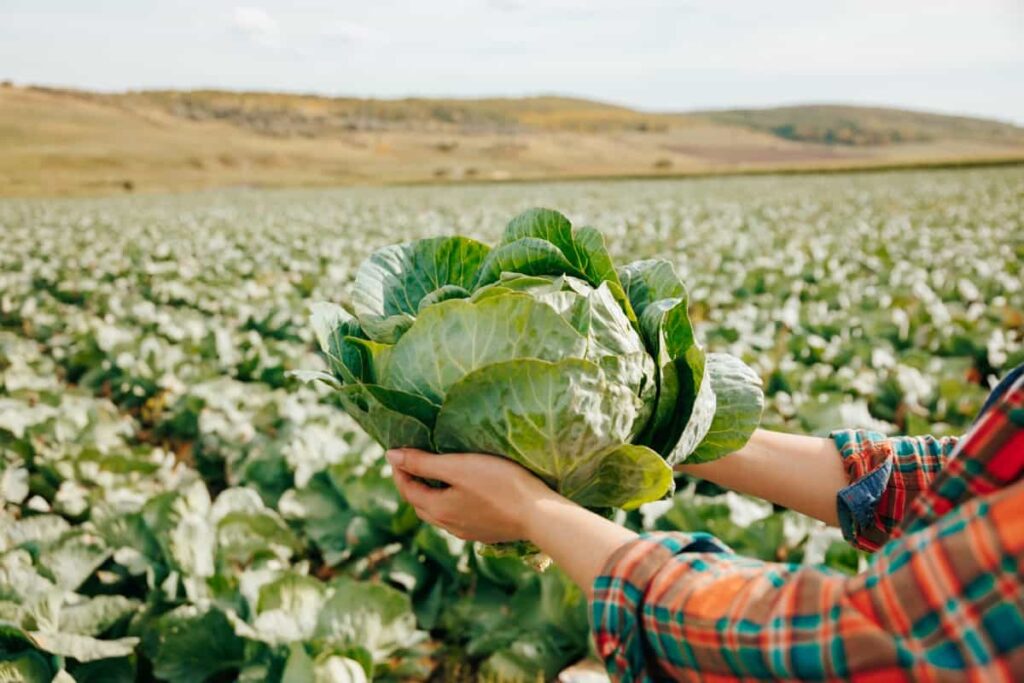
Out of the total area under different vegetable crops, the maximum area of about 1350 hectares is under cabbage only. Area wise second most important crop is the tomato which occupies 680 hectares. Besides, vegetables like French beans, carrots, cauliflower, cucurbits, and several locally available leafy vegetables are also grown in different parts of the state.
| District | Vegetable crops |
| Dimapur | Mandarin, Lemon, Pineapple, Banana, And Litchi |
| Kohima | Mandarin, Lemon, Papaya, Pineapple, Peach, Plum, Banana |
| Mokokchung | Mandarin, Lemon, Passion Fruit, Banana, Pineapple, Litchi |
| Mon | Mandarin, Mosambi, Banana, Papaya, Passion Fruit, Pineapple, Guava |
| Phek | Mandarin, Passion Fruit, Lemon, Papaya, Guava, Banana, |
| Tuensang | Mandarin, Banana, Pineapple |
| Wokha | Passion Fruit, Mandarin, Pineapple, Banana |
| Zunheboto | Pineapple, Mandarin, Banana, Passion Fruit, Papaya, Mango, Lemon, Guava, |
| Kiphere | Mandarin, Passion Fruit, Pineapple, Papaya, Plum, Banana, Mango |
| Peren | Mandarin, Lemon, Papaya, Banana, Passion Fruit, Guava, Wild Mango |
| Longleng | Passion Fruit, Papaya, Lemon, Pomello, Mandarin, Plum, Guava |
Organic fruit farming in Nagaland
Nagaland is also favorable for growing different tropical and sub-tropical fruits such as banana, papaya, passion fruit, jackfruit, grape, and orange. Farmers in rural Nagaland have shifted from paddy cultivation, an age-old practice, to pineapple production. In the present situation, pineapple has become one of the most important commercial crops in the state, drawing rural populations to its cultivation, thus providing a huge livelihood and employment opportunity.
Currently, 3,700 hectares are used for pineapple cultivation in the entire state. Although pineapple cultivation was random and scattered over the years, progress has been made in terms of improvement in pineapple cultivation and commercialization. Presently with an average fruit productivity of 8.33 t/ ha, the state produces a total of 151.30 thousand tones of fruits from an area of 18.16 thousand hectares.
In case you missed it: How to Break Down Clay Soil: Naturally Amending with Gypsum, Manure, Sawdust, Vinegar, Earthworms, and Lime
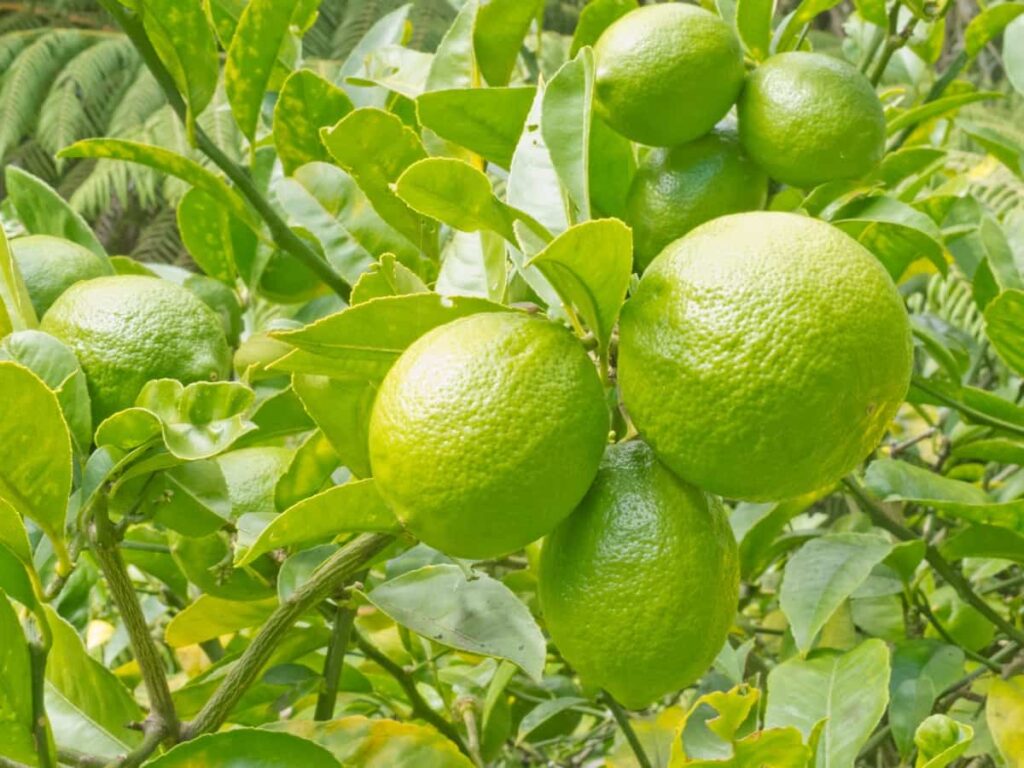
The first priority is to raise the per-hectare productivity to the all-India average of 11.2 t/ ha through the adoption/ development of suitable agro-techniques to achieve 225.0 thousand tonnes by 2025. The following strategies may be adopted to achieve the target.
- Gradual replacement of old citrus orchards with elite planting materials adopting appropriate technologies for better productivity with quality fruits
- Gradual replacement of existing pineapple planting system and introduction of double raw planting system with appropriate technologies.
- Area expansion programs on guava, peach, strawberry, litchi, kiwi, apple, etc., may be phased.
- Establish disease-free rootstock and scion block of elite varieties of identified fruits to produce quality planting materials.
- Creation of infrastructure for in-situ water harvesting for live-saving irrigation of identified fruit crops
- Demonstrations on farmer’s fields for each of the identified technologies suitable for different fruits may be conducted in each block of the districts.
| District | Fruit crops |
| Dimapur | Chillies, Tomato, Ginger, Leafy Vegetables, Cabbage, Cauliflower, Bhindi |
| Kohima | Ginger, Turmeric, Pepper, Chillies, Beans, Chowchow, Cucurbits, Leafy Vegetables, Brinjal, Tomato, Lilium |
| Mokokchung | Ginger, Cucurbits, Tomato, Colocasia, Papaya, Kiwi, Chillies, Sweet Potato, Tapioca, Leafy Vegetables |
| Mon | Colocasia, Tapioca, Chowchow, Leafy Vegetables, Beans, Chilli, Brinjal, Tomato, Ginger |
| Phek | Chillies, Colocasia, Cucurbits, Tapioca, Ginger, Turmeric, Tomato, Leafy Vegetables |
| Tuensang | Tomato, Ginger, Chilli, Cabbage |
| Wokha | Potato, Chillies, Lilium, Arecanut, Tea |
| Zunheboto | Chowchow, Tapioca, Colocasia, Chillies, Beans, Tomato, Ginger, Turmeric, Pepper, Leafy Vegetables |
| Kiphere | Colocasia, Chowchow, Tomato, Cabbage, Chillies, Tree Tomato, Leafy Vegetables, Ginger |
| Peren | Colocasia, Cabbage, Chowchow, Ginger, Chillies, Brinjal |
| Longleng | Giner, Turmeric, Pepper, Tomato, Colocaisa, Tomato, Brinjal, Cabbage, Chowchow, Leafy Vegetables, Chillies |
Organic herb farming in Nagaland
The Nagaland government is setting up seven herbal gardens this year to promote the state’s medicinal plants. The gardens will be set up at Rangapahar in Dimapur, Jalukie at Peren, Khezhakeno in Phek, and Doyang in Wokha, besides one each in Mon, Mokokchung, and Kohima. The objectives of developing the gardens are:
- To conserve medicinal plants, develop a gene pool of medicinal plants for conservation and propagation.
- Popularisation of use of local medicinal and aromatic plants.
- Establish a sustainable medicinal plant resource base, among others.
For sustainable management of these herbal gardens, the government plans to manage and create a herbal nursery, construct a vermicompost unit and interpretation center, and set up primary processing units like portable distillery units for value addition.
Global Open University, Nagaland, has designed a plan to meet the growing needs of experts in the fields of medicinal plants, herbal plantation, medicinal plants resource management, quality control and standardization of herbal drugs, extraction, and marketing of medicinal plants. The move (to set up herbal gardens) is a part of the government’s plan to tap the wide range of herbal plant species in the state. In addition, the government is trying to promote herbal plantations in the state.
Organic millet farming in Nagaland
Millets are not new to Nagaland; it was part of its history. Blended with a diverse range of nutrient-rich values, the crop is a keystone crop that survives through climate variations. It is one of the most important cereals crop grown in Nagaland. Traditionally millets were commonly known for brewing and are an integral part of the community diet. Millets have long been cultivated in the hilly terrain of the Eastern part of Nagaland.
It has been part of the staple diet of the people. And in recent times, the value of millet has increased to a large extent. Millets increase soil fertility, consume less water, and have high nutritional values. They were also particularly known to be insured during natural calamities like food scarcity and climate change. However, the crop was not grown much in the foothill and plain in Nagaland.
In case you missed it: Growing Pearl Millet/Bajra Organically in Rajasthan: Step-by-Step Farming Practices and Production

This is where all millets- Bajra, jowar, ragi and small millets- are cultivated in very small acreages. As a result, the productivity levels are generally lower than the national average, especially in finger millet. Millets are mainly grown in the districts of Phek, Tuensang, Kiphire, and some areas of Kohima. Traditionally, millets were known for making a brew and formed an integral part of the community diet.
Organic livestock farming in Nagaland
Animal husbandry is a tradition among the Nagaland people. In Nagaland, domestic animals such as cattle, pigs, and poultry birds play an important role in socioeconomic development. Thus, the great responsibility of the Veterinary & A.H. Department lies with matters relating to Livestock and Poultry development, prevention of livestock diseases, Diary Development, Feed & Fodder Development, including livestock statistics of the state.
In other words, the Veterinary & A.H. and Dairying sector also provides gainful self-employment opportunities to the ever-increasing unemployment problems amongst the educated youths of the state to enable them to contribute to family income. The climate of Nagaland has been quite conducive to livestock rearing for centuries, and the rearing of livestock has been symbolic of the health and wealth of Nagaland families since time immemorial.
In Nagaland, livestock and poultry farming have been integral to life since immemorial, symbolizing family wealth and health. Along with the efficient utilization of agricultural products and byproducts unsuitable for human consumption, animal husbandry practices have played a crucial role in supplementing family income and creating employment in rural areas. Pigs are the most important livestock in the state of Nagaland, which play a significant role in the livelihood of small farmers.
Moreover, the rearing of the pig is related to the Nagaland people’s culture; on average, every household in the state rears pigs as pork is the most preferred meat. In peri-urban areas, many semi-commercial piggery farms are cropping up, providing employment and financial assistance to the entrepreneurs, and meeting the pork demand of the state to some extent. Presently, the department is maintaining ten nos of functional piggery farms.
In addition, the department has established 11 veterinary hospitals, 17 dispensaries, and 127 veterinary health centers. These institutions provide veterinary services and consultancy to farmers and livestock farmers in urban and rural areas.
Organic aquaculture in Nagaland
Aquaculture is one of the major sectors of food production in Nagaland, where the value of fish and its byproducts have increased over the years. The Nagaland state fisheries department has targeted the self-sufficiency of fish for the state and is planning to identify various fish species suitable for climatic conditions. Currently, the fish production in Nagaland is 8820 MT, and fish seed production is 478 lakhs.
In case you missed it: Fish Hatchery Business Plan: How to Start, Cost, Profits, and a Great Way to Make Money
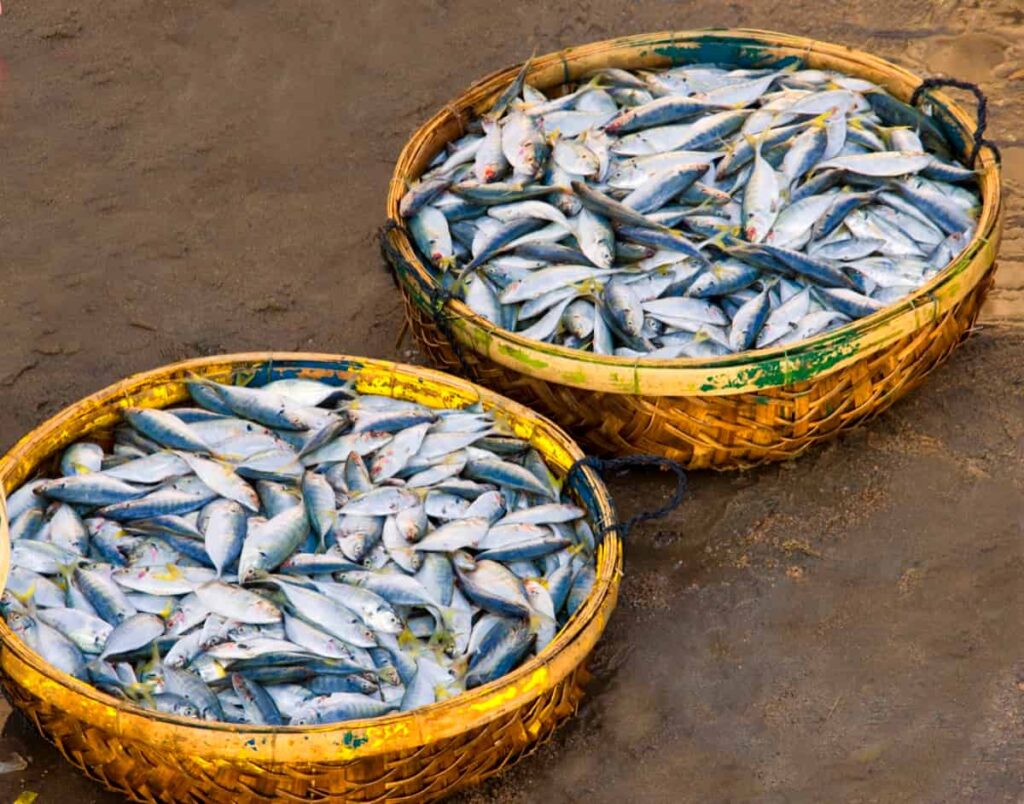
In addition, there are 8 district demonstrations of fish farms in Nagaland, one cold storage in Dimapur, one ice plant, two prawn hatcheries, one awareness center, five farming centers, and one retail fish marketing outlet. Nagaland also has prospective scope for developing ornamental fisheries, cold water fisheries, and giant freshwater prawn farming.
Paddy-Cum-Fish Culture is the second major resource for fish production in the state and is being practiced in considerable areas. The total paddy field that can be harnessed for integration with fish culture is about 75,700 hectares. However, there is still vast scope for developing more areas under this system that can be taken up through the application of Scientific Technologies for augmenting fish production.
However, some of the constraints and challenges in Nagaland are the lack of an organized market, lack of scientific knowledge among fish farmers, lack of aquaculture insurance at par with agriculture, limited financial power at district and field levels, non-availability of quality fish seed and feed, and lack of training infrastructure.
How to get organic certification in Nagaland
Organic certification requires that the product be produced under NPOP standards and be free from chemical contamination such as pesticides and weedicides. An organic product can only be certified after three years of adopting organic production practices. An organic certification confirms that the product was produced under strict NPOP guidelines. When an organic product is certified by a competent certifying body, consumers can be sure it is genuine. The price of organic products is also higher than those grown conventionally.
- Suppose a farmer, a group of farmers, a processor, or a trader wants an organic farming certificate for their agricultural products. In that case, the farm must meet the standards laid out by the National Programme for Organic Production (NPOP) for organic crop production.
- National Programme for Organic Production (NPOP) requires them to apply with the required file format and complete field verification.
- The National Programme has standardized organic crop production for Organic Production (NPOP).
- The application form and the contract form must include all the information required by the National Programme for Organic Production (NPOP), including name, address, contact details, field location, and group details, which must be filled out, signed, and returned to the office for registration.
- After the evaluator assesses the application and accepts it, they will send the operator the offer letter (fees for the inspection and certification) and a copy of the agreement. Technical reasons may prevent the client from being accepted for certification. If this is the case, the client will be informed of the same.
- Operators for Organic Production (NPOP) are registered with the National Programme.
- The applicant must pay the prescribed registration fee, one-time travel cost, field inspection, and application fee.
- Upon receipt of the payment, fix the inspection date with the operator and send an inspection notification letter along with a copy of the farm records and the NPOP standard.
- The inspection will be conducted the day the agreement is finalized, and a signed copy will be provided to the operator. The operator will receive a copy of the inspection report during the inspection. The evaluator receives the detailed inspection report.
In case you missed it: How to Start Bio Farming/Agriculture: A Step-By-Step Guide for Beginners
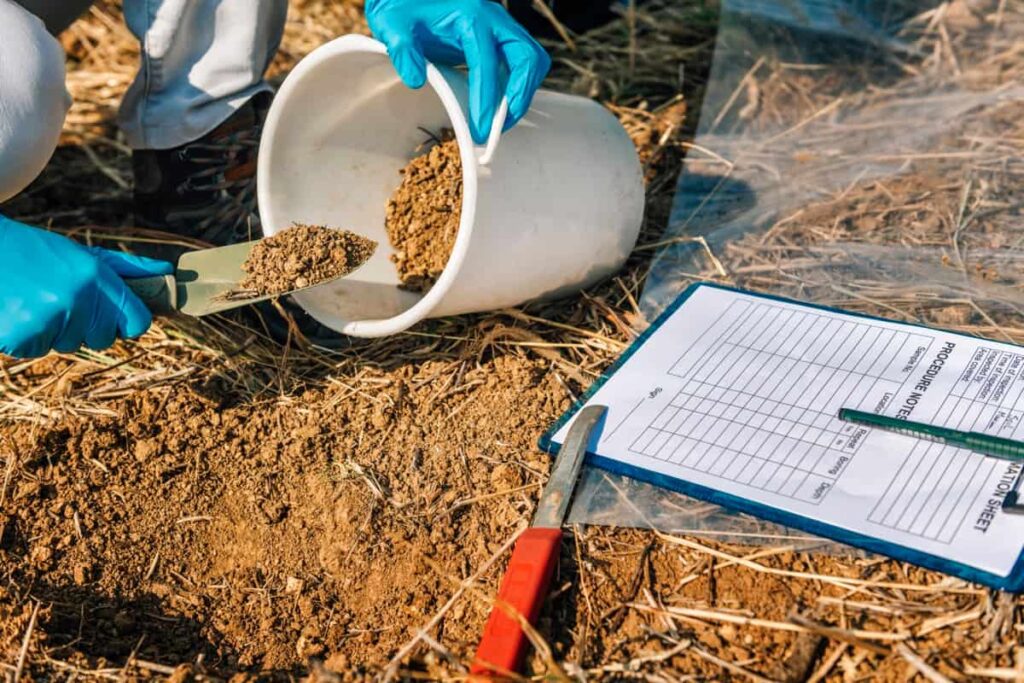
- The tracenet records the detailed crop list, major and minor nonconformities, and the deadline for corrective action for each operator.
- In the case of group farmers, the certification body (C.B.) enters the data entered into the tracenet by the group, along with major and minor nonconformities and the deadline for correcting them.
- After receiving the full payment, the evaluator reviews the operator file and submits it to the Certification committee. The Certification Committee makes a final decision based on the corrective measures taken by the operator in response to nonconformities raised in the inspection report.
- Through the tracenet, the Quality Manager will generate the certificate and send it to the operator.
- As per NSOP, the operator must submit a request to the office for the certification agency logo/India Organic Logo, which will be sent to the operator after approval by the Certification committee. Moreover, before labels are printed, they must be verified and approved by the certification agency.
Conclusion
Approximately 13,000 hectares of organic land are cultivated in 241 villages of Nagaland, and 13,500 farmers are involved in the practice. As Nagaland seeks to promote organic farming, it needs to focus on rural connectivity and implement a mechanized approach. To facilitate stronger marketing access under the ownership of the growers’ organization, the government of Nagaland has registered the brand as Naga Organic. The FPOs and entrepreneurs under the mission have started selling their produces and products under this brand.
- Water Usage Efficiency: ZBNF vs. Conventional Farming
- Goat Farming Business Plan: 10 Key Points to Consider
- How to Make Your Sheep Gain Weight in 3 Months
- How to Start a Terrace Garden in Hyderabad: Best Tips for Beginners
- Comparative Yield Analysis: ZBNF vs. Conventional Farming
- Ultimate Guide to Commercial Tulip Farming: Cultivation Tips for Beginners
- Bridging the Technology Gap: HELIOT Systems Transforming Agriculture for Small and Marginal Farmers
- How to Grow Fig Trees in Containers: A Comprehensive Guide
- How to Prevent Fruit Split in Pomegranates: Effective Tips for Beginners
- Natural Farming for Livestock: Effective Practices for Beginners
- Ultimate Guide to Growing Currants: Tips for Successful Red and Black Currants Farming
- How to Boost Bottle Gourd Flowering and Yield
- A Step-By-Step Guide to Organic Papaya Farming
- Step-By-Step Guide to Hazelnut Farming: Cultivation Guide for Beginners
- Pruning and Training Techniques for Gourds
- Pollination Strategies for Better Fruit Set in Plants: A Beginners Guide
- How to Convert Existing Drip to Sprinkler Irrigation: A Beginner’s Guide
- Reasons for Papaya Tree Leaves Turning Yellow: Solutions Explained
- Why is My Bonsai Tree Dying: Reasons and Solutions
- Natural Farming Techniques for Beginners
- Why is Citrus Tree Leaves Turning Yellow: Reasons and Solutions
- Cultivator Uses in Agriculture: A Beginners Guide
- Modern Irrigation Methods in Agriculture
- How I Make My Peppers Grow Faster: A Comprehensive Guide
- Crops Grown in Summer Season: Best Choices for Summer Gardening
- Organic Pest Control for Tomato Farming
- How to Maximize Sheep Farming Profit
- Broccoli Varieties: Choosing the Right Cultivars for Your Farm
- How to Raise Pigs in Your Own Backyard: A Comprehensive Guide
- Budget Friendly Sheep Shed Ideas: Cheap and Low-Cost Tips
- How Much Do Cattle Farmers Make: Revenue Streams in Cattle Farming
- Management Pests and Diseases in Your Cotton Field
- Sheep Farming Business Plan for Beginners
- Aquaponic Farming at Home: A Step-By-Step Guide
- Profitable Village Farming Business Ideas in 2024
- High-Yield Aquaculture: Fast-Growing Fish for Farming
